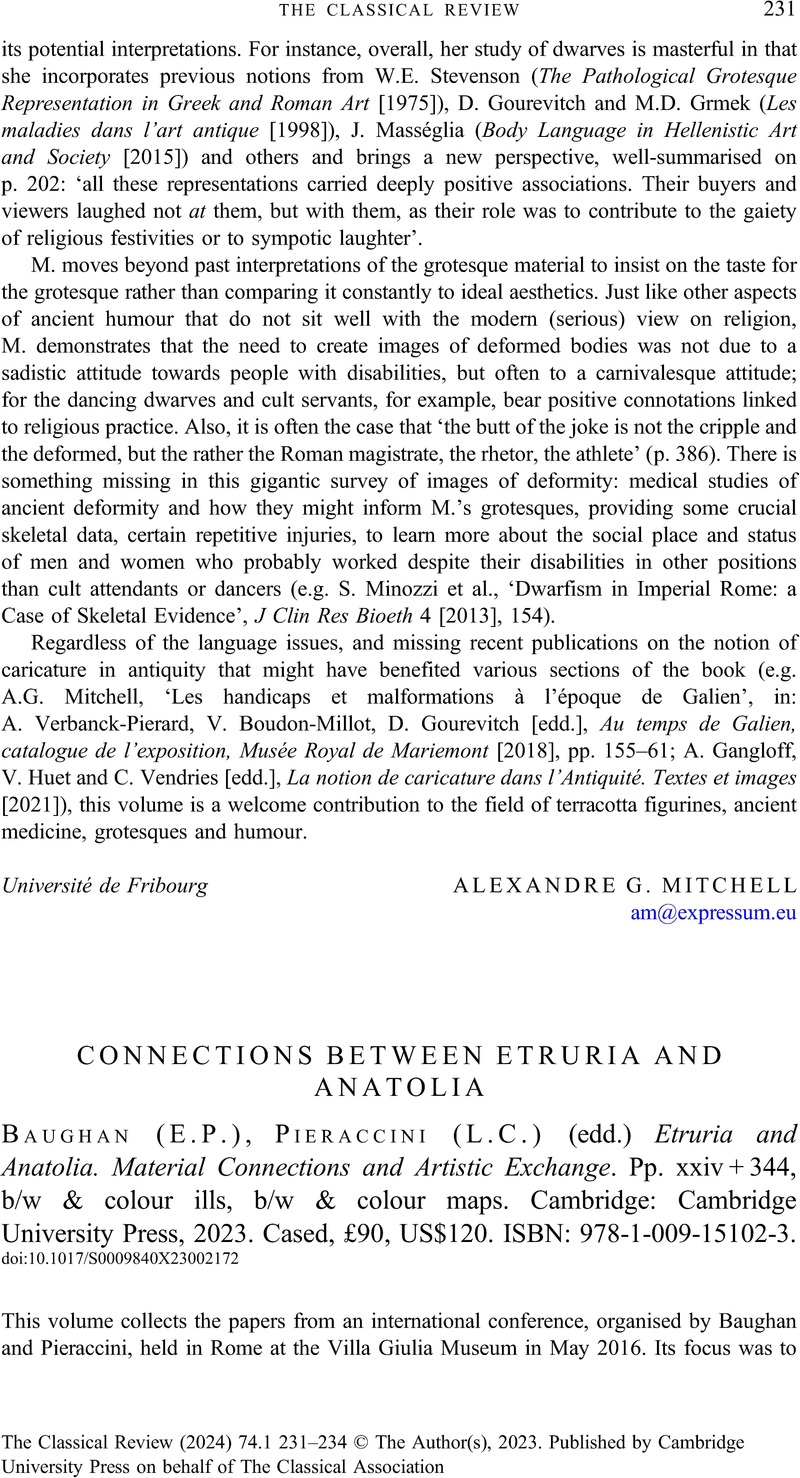No CrossRef data available.
Article contents
CONNECTIONS BETWEEN ETRURIA AND ANATOLIA - (E.P.) Baughan, (L.C.) Pieraccini (edd.) Etruria and Anatolia. Material Connections and Artistic Exchange. Pp. xxiv + 344, b/w & colour ills, b/w & colour maps. Cambridge: Cambridge University Press, 2023. Cased, £90, US$120. ISBN: 978-1-009-15102-3.
Review products
(E.P.) Baughan, (L.C.) Pieraccini (edd.) Etruria and Anatolia. Material Connections and Artistic Exchange. Pp. xxiv + 344, b/w & colour ills, b/w & colour maps. Cambridge: Cambridge University Press, 2023. Cased, £90, US$120. ISBN: 978-1-009-15102-3.
Published online by Cambridge University Press: 17 November 2023
Abstract
An abstract is not available for this content so a preview has been provided. Please use the Get access link above for information on how to access this content.

- Type
- Reviews
- Information
- Copyright
- Copyright © The Author(s), 2023. Published by Cambridge University Press on behalf of The Classical Association



